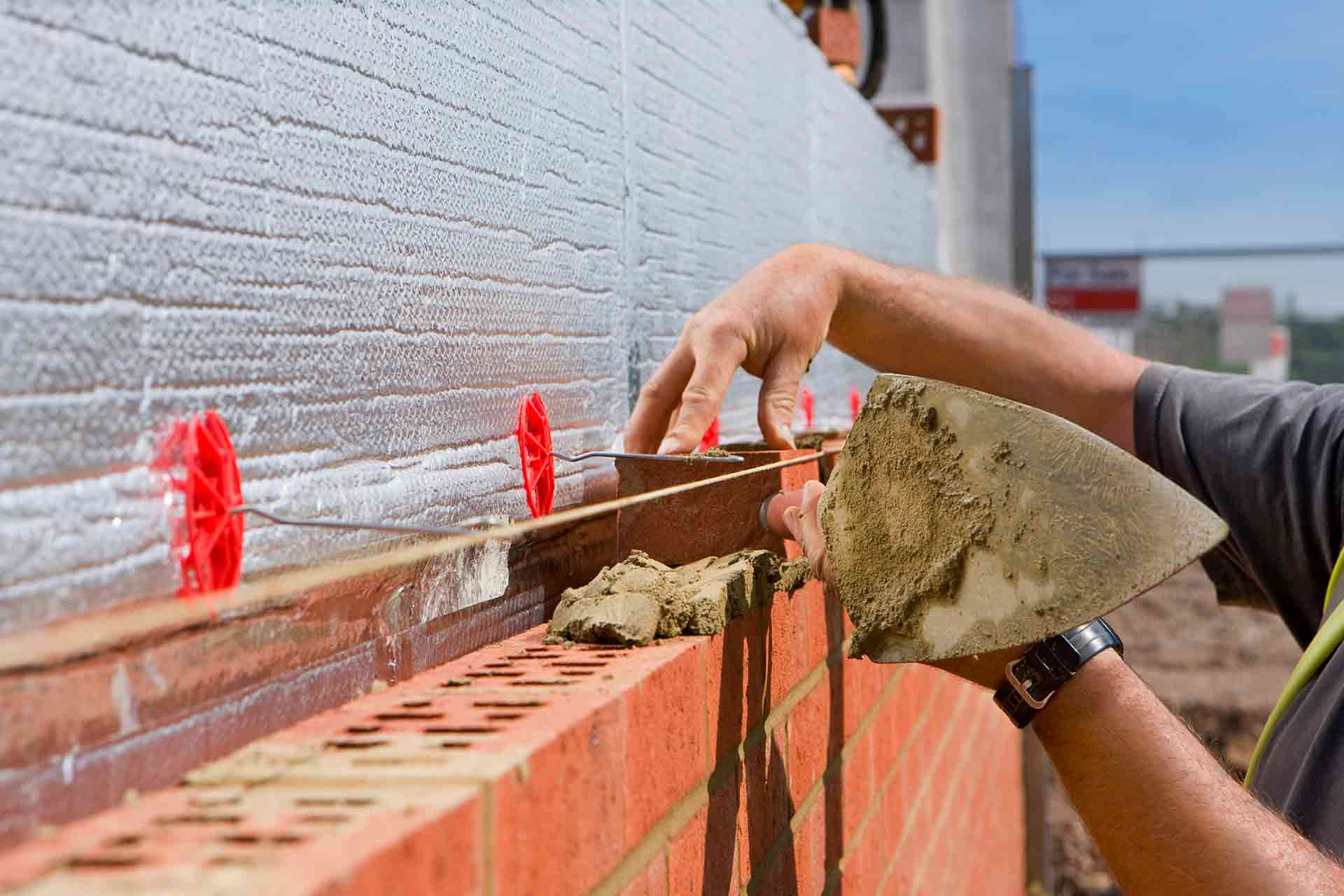Bricklayer Auckland Can Be Fun For Everyone
Wiki Article
The Buzz on Bricklayer Auckland
Table of ContentsThe Best Strategy To Use For Bricklayer AucklandThe Definitive Guide to Bricklayer AucklandBricklayer Auckland Fundamentals ExplainedA Biased View of Bricklayer Auckland
The difference between absolutely no and traditional masonry is in the laying of the block. The block is no more pressed up and down, yet slanted. No has an unique opening on the upper side of the brick. As an outcome the mortar bed is lower. It will sink also much deeper when the next training course of blocks is laid.In enhancement, we additionally took note of a great percentage between the length as well as width of the brick to make sure that it is perfect for dealing with a stretcher bond. In this manner the work proceeds rapidly. Advantage, For a contractor in this manner of working is hardly a challenge. He can work with the material/equipment that recognizes to him.
Bricklayers are an important occupation in the building sector, liable for laying blocks, pre-cut rock and also cinder block in mortar. Bricklayers construct, prolong and repair residential and also business structures, as well as other frameworks such as structures, wall surfaces, smokeshafts or decorative masonry. Getting to the end of a task and also having the ability to state 'I developed that' offers a real feeling of success for brickies.
Your time as a bricklaying pupil will usually be split in between your employer and training company (such as a college), with at the very least 20% of your regular working hours invested in training. Your training could occur every week, every month or in a different block of time, and also it can occur at your workplace, at your training company or online.
Bricklayer Auckland Things To Know Before You Get This
When researching building and construction, you invariably discover that any type of brand-new or cutting-edge idea has actually been tried over as well as over once again, often stretching back decades. Among these new-but-actually-old ideas is the concept of a mechanical bricklayer, a maker to automate the building and construction of stonework wall surfaces. It's simple to see the allure of this suggestion - stonework building and construction appears virtually perfectly fit for automation.It doesn't appear like it would certainly need physically complicated movements - each brick obtains a layer of mortar applied, and also is simply laid in area beside the previous one. And also because each traditional joint coincides size, placement is nearly deterministic - each brick is the same set range from the previous one.
These equipments could not sense anything about their environment, or action where a brick required to go - they merely extruded a layer of mortar and mechanically positioned a brick at routine periods (Bricklayer Auckland). It's uncertain exactly how numerous of these machines ever before made it beyond the drawing board, but at the very least one of these (John Knight's) was used to develop a block wall that apparently still stands today.
Throughout the years, masonry has actually my latest blog post declined in relevance as Go Here a building innovation in the established world, and also with it the interest in automating it. Unlike with concrete 3D printing, where there are loads of efforts to establish the modern technology, I can only locate a handful of current initiatives to automate masonry. Bricklayer Auckland.
An Unbiased View of Bricklayer Auckland
It can placing blocks in limited corridors or complex corners, and Hadrian can create all the walls of a little building with simply a couple of steps of the automobile. Hadrian can currently establish around 200 blocks a hr, however they're aiming to be able to do 1000 obstructs a hr or more (the blocks it establishes are various from the block masonry made use of in the United States, but in United States masons can establish somewhere in the neighborhood of 400 obstructs a day).
SAM has a series of sensing units to make up for the motion of the platform and also guarantee it's putting bricks degree, and can collaborate with bricks of all various dimensions (though it won't construct CMU block walls). It gets installed to a movable scaffolding that's raised gradually as the wall is finished.
The advertising material on Building Robotics' web site recommends that it's no much longer their main focus - more focus is provided to their various other item, MULE.Other than SAM as well as Hadrian, Find Out More there are a couple of various other mechanical bricklayers in various stages of advancement. You likewise see the periodic scholastic initiative. One area where we do see some industrial success with mechanical bricklaying is with block roadways - a range of firms supply equipments that can "publish" an area of road made of blocks.
The 5-Second Trick For Bricklayer Auckland
A slightly various classification of equipments intended at enhancing stonework performance is what I'll call "stonework aides". These are equipments created to aid with physically lifting the block (they appear to be a lot more typical with block than block) and taking the strain off the mason, while still allowing the mason to adjust it into placement, Stonework assistants date from at the very least 1994, when the army try out MAMA, the Mechatronically Assisted Mason's Help.
Report this wiki page